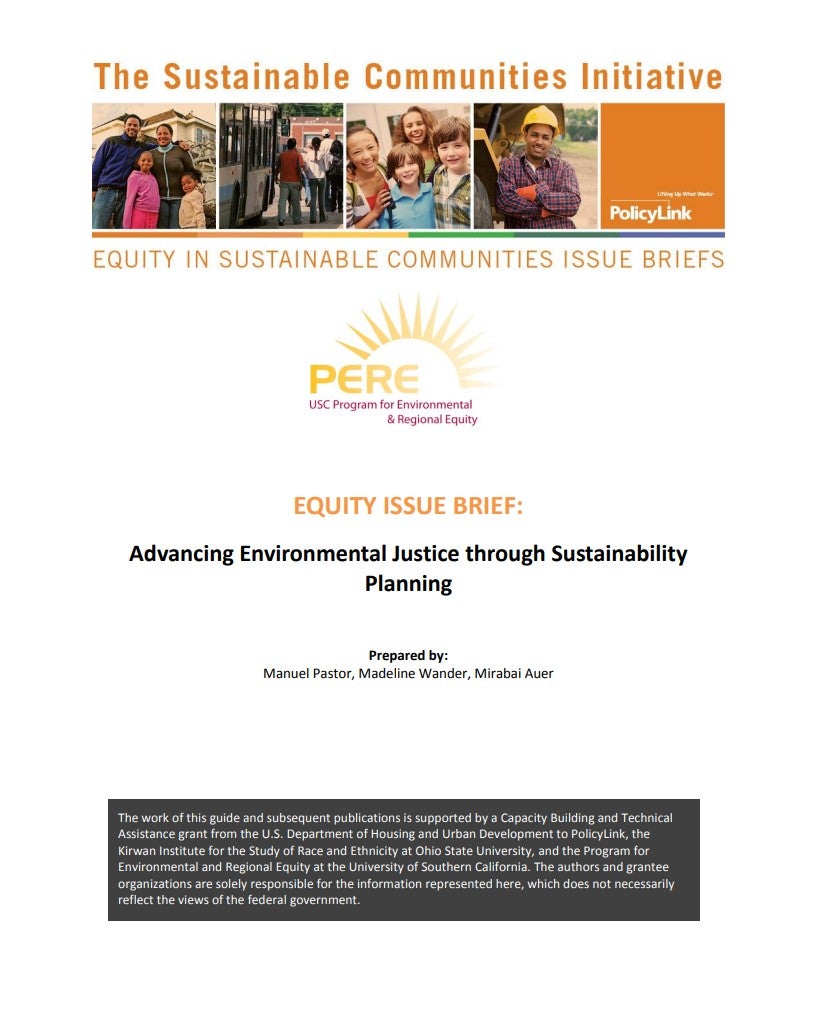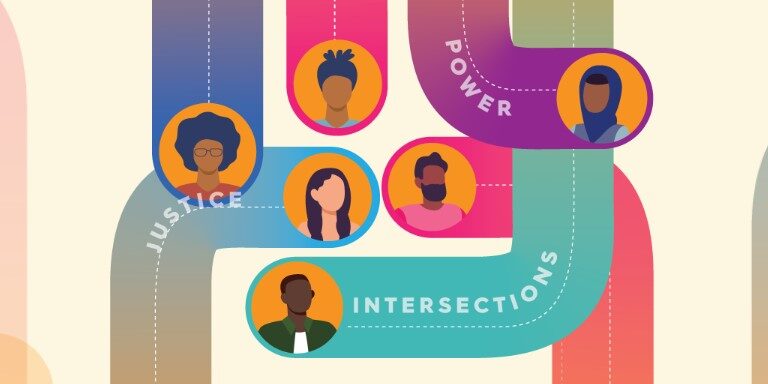
December 2012
Prepared by Manuel Pastor, Madeline Wander, and Mirabai Auer
Please note: reports dated earlier than June 2020 were published under our previous names: the USC Program for Environmental and Regional Equity (PERE) or the USC Center for the Study of Immigrant Integration (CSII).
This brief is one in a series that PolicyLink and the University of Southern California Program for Environmental and Regional Equity (PERE) assembled for the federal Sustainable Communities Initiative (SCI), an interagency effort coordinated by the U.S. EPA, the U.S Housing and Urban Development (HUD), and the U.S. Department of Transportation (DOT). The series is intended to support a learning community of regional and local governments focused on integrating equity (economic, social, and environmental) into plans and projects.
In this brief, we explain why addressing the inequitable distribution of environmental and health burdens and benefits—that is, why working to achieve environmental justice—is a key to creating sustainable regions. New research shows that where toxic exposure is worse for some, it is worse for all, meaning that environmental inequality can erode overall environmental quality. In this sense, environmental justice and regional sustainability go hand-in-hand.
We then explain how local and regional planners can work to achieve environmental justice in their regions. First, we show how to measure environmental justice by introducing the idea of “cumulative impacts,” which gives a full picture of community burden and emphasizes the importance of evaluating both health risks and social vulnerability. Second, we focus on the centrality of community engagement in addressing environmental justice through program and policy development. Finally, we introduce “climate justice” as a next frontier for environmental justice struggles and sustainability planning.



